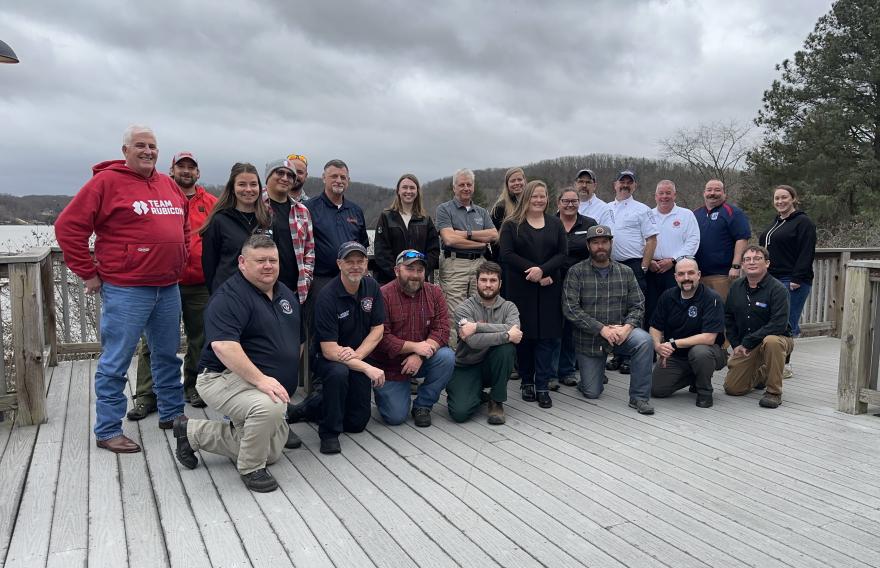Updates & Blog
Empowering local communities, addressing wildfire risk

PHOTO: Attendees of the Community Wildfire Mitigation Best Practices course in Pulaski County, Virginia, in early 2024 were primarily from county governments and local fire departments along with several state officials. Courtesy photo by Brook Smith, Tennessee Department of Agriculture, Division of Forestry.
VIRGINIA—Across the nation, more people than ever are living with heightened wildfire risk because their homes intermingle with forests and nature, where wildfire risk is higher. In the South, many forests are within a mile of residential areas, and more than 90 million acres are classified as wildland-urban interface.
Since 1990, the wildland-urban interface in the South has grown by more than 24.7 million acres, making it one of the fastest growing regions in the nation. To address the increased risk of wildfire that accompanies the increase in the wildland-urban interface in the South, a group of leaders recently gathered in Virginia to learn more about wildfire mitigation, community engagement, partnership building and training on how to work with residents or volunteers. The training was especially valuable as empowering local communities to address their risk when living in wildland-urban interface is important.
Dave Berens, a U.S. Department of Agriculture’s Forest Service prevention and mitigation specialist with the Southern Region’s Fire and Aviation Management, attended the course and was invited to add lessons from his work with community planning and federal grants.
Berens shared that courses like this teach the process of how to work within our communities to reduce risk from wildfires.
“Many who attended the course already knew that work was needed to mitigate risks in their communities, but this course provides guidance for using local partnerships, science and risk assessments to identify mitigation needs,” said Berens. “It also includes ideas for hosting community events, building local leadership and introduces the basics of a Community Wildfire Protection Plan.”
A series of steps are required to create a protection plan to help manage risks in communities.
“Collaboration is a key element to gain buy-in from the community, from risk identification to writing a community wildfire protection plan to requesting funds or grants to implement the plan,” added Berens.
This is the second time that Coalitions & Collaboratives, Inc. has provided the course—Community Wildfire Mitigation Best Practices—in the South as part of an agreement with the Forest Service. The course requires participants to develop a wildfire hazard mitigation action plan aligning with the requirements of the Mitigation Best Practices course listed as Incident Qualifications and Certifications System N-9073.
This blog was originally shared via the U.S. Forest Service’s “Inside the Forest Service” on March 11, 2024.